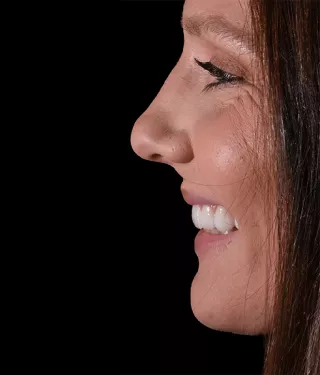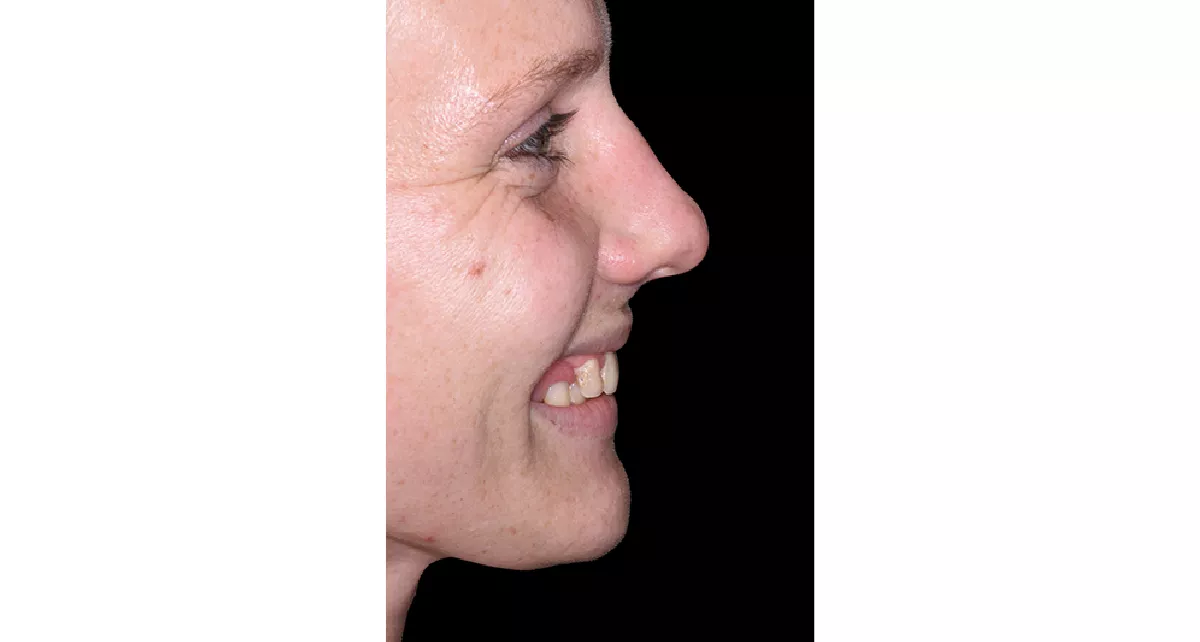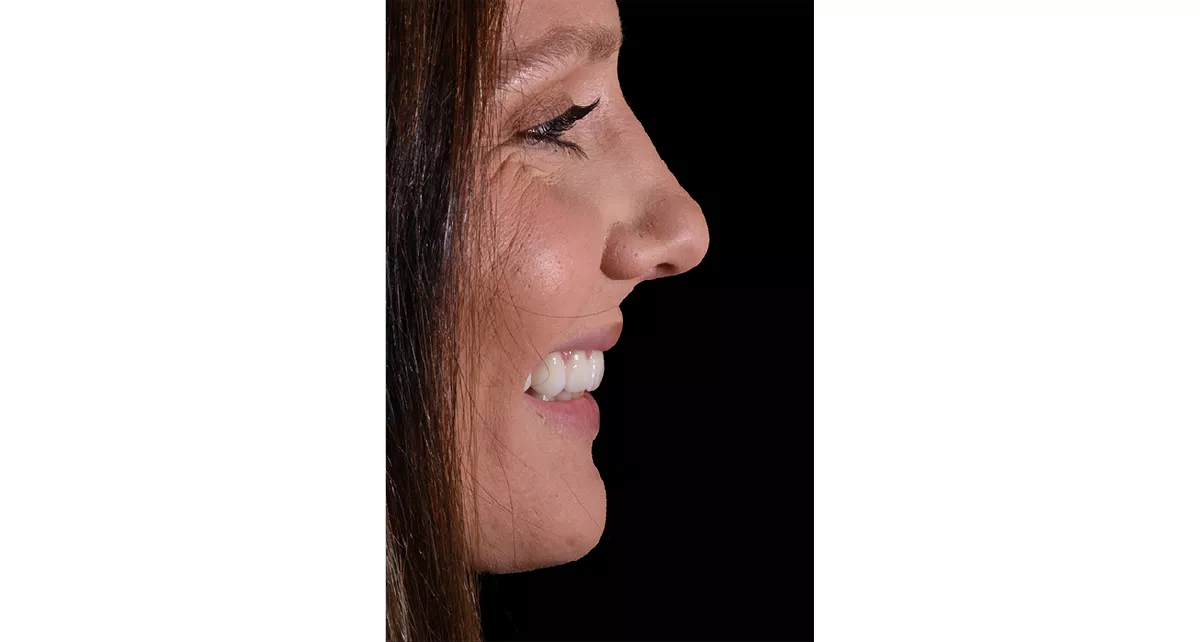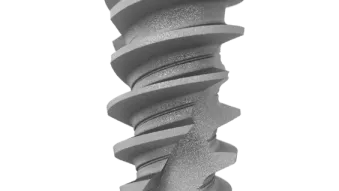
A fully facial analysis-based guide to edentulous treatment
Dr. Ernest S. Orphanos
To improve the predictability of our patients’ esthetics, treatment should be planned in a full facial context, not just that of oral anatomy. Without this consideration, even the most well-designed restoration risks disappointing esthetics.
Pre-operative assessment
A female patient with terminal dentition required full-arch restoration in both jaws. After cone beam scan and a periodontal and oral examination, she underwent an assessment of facial symmetry and proportions, including facial thirds, the proportion in the lower facial third, lip length, and lip mobility. Incorporating facial proportions is crucial for achieving ideal dentofacial esthetics and determining the anticipated incisal edge (AIE) position when planning for an esthetically pleasing smile. Ideally, the AIE position should show 1.0 to 2.0 mm at rest, with a repositioning of incisal edges apically by approximately 4.0 mm when smiling.

Periodontal examination and face analysis prior to surgery.
Surgical Protocol
The patient was treated with the All-on-4® concept in the mandible and full-arch on six implants in the maxilla. The maxillary ridge was reduced to ensure a minimum distance of 15.0 mm from the AIE, as determined from facial photos, to prevent the transition zone of the prosthesis from being visible during maximal smiling. Following alveolar reduction, a denture was fitted to evaluate proper facial support. After placement of implants, the patient received the provisional prostheses that produced a striking transformation in her appearance.

After delivery of provisional prostheses.
Begin with the end in mind
The ultimate goal of full-arch treatment is to restore dental and facial esthetics, phonetics and function. An understanding of the facial anatomy can help clinicians determine optimal incisal position. This in turn can enhance the dental and facial outcomes.


All images courtesy of Dr. Orphanos
References
1. Orphanos ES. Facial Esthetic Considerations with All-on-4: A Report on Two Cases. Int J Periodontics Restorative Dent. 2019;39(1):57-64.
Read on Pubmed



